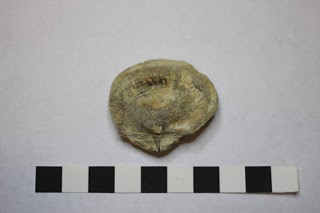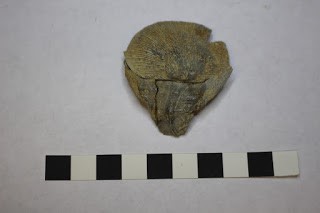Primary Research
January 25, 2016

Museums are fascinating places because they not only have interesting artifacts to see, but they also provide information about the objects. Where do museums get their information from? Quite simply, from research, whether it be primary research or secondary research.
Primary research is original research. These studies are produced by researchers who collect and describe new data, test new ideas, and subject this new information to scrutiny from peers. Primary research usually appears in academic journals, the type that have way too much technical jargon for most people. Secondary research is a compilation of original research. A secondary researcher does not test new ideas. Rather, he or she searches the primary literature for information, relates that information to other topics, and summarizes that information.
|
|
|
Steven King, Curator of Collections |
All museums must do secondary research. Since museums display artifacts, it is necessary to provide accompanying signs that explain what the object is or provide a proper historical context for the object. Museums must have accurate and up-to-date information to put on these signs. The standards of the American Alliance of Museums (AAM) requires the information in museums be accurate and factual. Listed are a couple of the AAM’s standards that relate to information accuracy:
- The museum’s interpretive content is based on appropriate research.
- The museum presents accurate and appropriate content for each of its audiences.
While it is not necessary for a museum to do primary research, it is often beneficial. Museums contain a wealth of information in the form of their objects, both those objects that are on display and those that are kept in storage. Because these objects are already held in one location, it is easy for museums to be involved in primary research. Once again, the AAM has standards concerning a museum’s involvement in primary research:
- The museum conducts collections-related research according to appropriate scholarly standards.
- Museums conducting primary research do so according to scholarly standards.
|
|
|
Derbyia filosa shell with both top and bottom valves. Notice that this brachiopod is relatively flat. |
For much of its history, the primary focus of the Museum of World Treasures has been to collect objects for display. However, as the Museum is growing and maturing, it is branching out in new directions. One such direction is scholarly research.
Steven King, the Curator of Collections and Staff Paleontologist, spent part of 2014 and 2015 working on a research project. He and some volunteers collected several fossils from a road cut in Butler County. The majority of the fossils found at this site are brachiopod fossils. Brachiopods are a type of shellfish. They look a bit like clams since they have a shell composed of two, hinged parts.
It became clear pretty quickly that most of the brachiopods belonged to a genus named Derbyia. What wasn’t so clear was what species they belonged to. There are several species of Derbyia and many of them resemble each other. To figure out the species, Steven did some secondary research by finding articles and books that described the various species of Derbyia. Then, he did some primary research by comparing the fossils to those descriptions. To help with this, he took measurements of the height and width of over sixty shells. These measurements were plotted on a graph and revealed that there were two different shapes of shells, which likely corresponds to two different species.
|
|
|
Derbyia profunda shell with both the top and bottom valves. Note that the bottom valve is very tall. In life, it would have been conical. |
Knowing that he was looking for two species, and having a better idea of their shapes, helped Steven identify the two species. They are Derbyia filosa, which has a low, flat shell, and Derbyia profunda, which has a deeper, conical shell. Once the species were identified, Steven wanted to share this information with others so he wrote an article and submitted it to the Transactions of the Kansas Academy of Science. After a few modifications, the article was accepted and published on October 27, 2015. You can check out the article here.
Why go through all this trouble? Does this sort of research matter? Does the identification of two species of shellfish change anything? Sure it does. Even though it may seem trivial, it is one more piece of knowledge to be added to the collective knowledge that humans have built up over the years. Whether or not it is of any practical purpose has yet to be seen, but it still expands human knowledge of the world that we live in. Ultimately, that is why it is important for museums to conduct primary research: to broaden human knowledge and thinking, not only by presenting artifacts and ideas to the public, but also by discovering new information.

